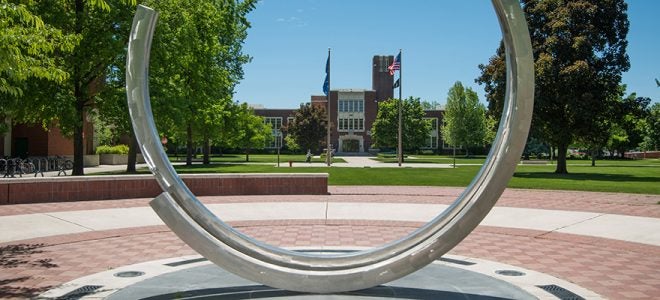
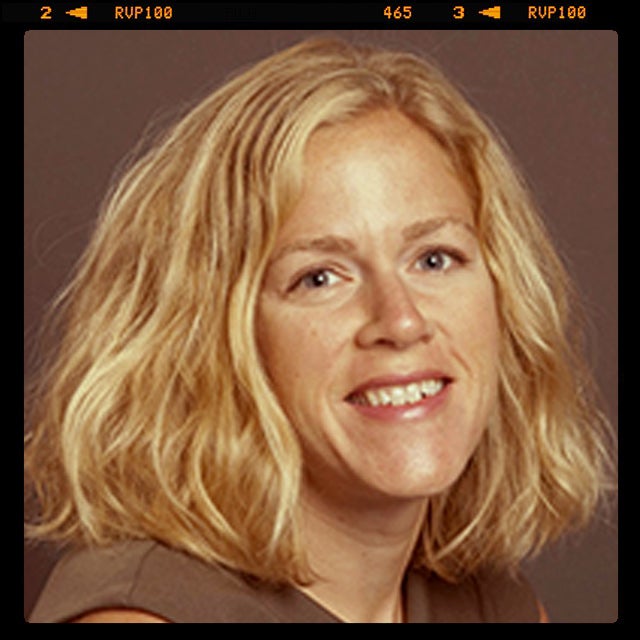
Amanda Ashley is the Director of the Urban Studies and Community Development Program in Boise State University’s School of Public Service, and a Professor of Community and Regional Planning who studies economic and community development. Her work on on art, design, and placemaking is published in the Journal of the American Planning Association, Journal of Planning Education and Research, Journal of Planning History, Urban Affairs Review, and Cities: The International Journal of Urban Policy and Planning.
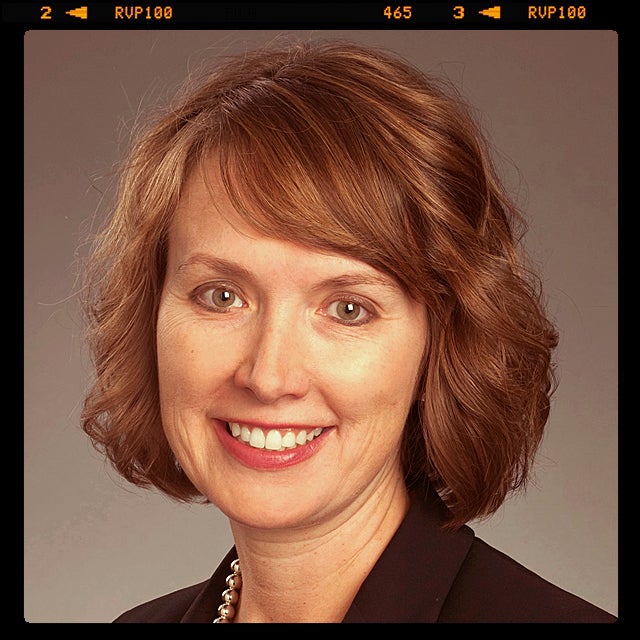
Leslie Durham is the Director of Boise State University’s new School of the Arts, an Associate Dean in the College of Arts and Sciences, and a Professor in the Department of Theatre, Film, and Creative Writing. She is the author of three books: Staging Gertrude Stein: Absence, Culture, and the Landscape of the American Alternative Theatre; Theatre Lives: An Introduction to Theatre; and Women’s Voices on American Stages in the Early Twenty-First Century: Sarah Ruhl and Her Contemporaries.
Universities are likely the greatest arts patrons in the United States, with an estimated investment of more than 5 billion dollars. Universities house art museums, theatre companies, symphony orchestras, film studios, and publishing outlets, just to name of a few of the kinds of arts organizations that live under the higher education umbrella. Despite their contributions, there’s little research about their evolving role in the regional arts ecology.
Higher education institutions are part of a national and global movement to leverage the arts to achieve economic development and community growth (AED) through innovative policies, programs, and investments. State economic development agencies and municipal arts and culture departments across the United States are experimenting with artist tax incentives, film/design production tax breaks, entrepreneurship business loans, creative districts, maker spaces, artist/live/create zoning, cultural tax sharing programs, and a variety of other people and place-based investments to support AED. Colorado, in particular, is seen as an AED leader, thanks in part to its Colorado Creative Industries, a division of the State’s Office of Economic Development & International Trade.
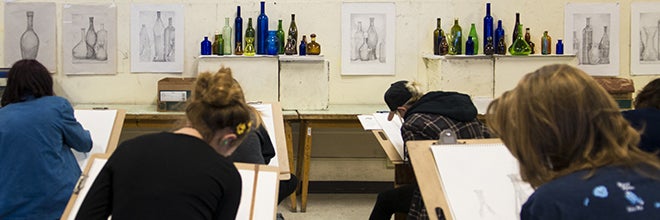
POLICY MOTIVATIONS
Public sector investments typically align with five policy motivations, each with its own historical trajectory towards city building and urban revitalization. The first is arts tourism, which signaled by large entertainment clusters and districts that attract out-of-town visitors who then spend money on restaurants and hotels as the case. An excellent example of this is LA Live!. The second vein treats artists and their bohemian lifestyles as an amenity to attract knowledge workers or college educated people; Wicker Park in Chicago and the Pearl District in Portland are common examples (as well as cautionary tales of gentrification). Third, communities incentivized by the National Endowment for the Arts’ (NEA) Our Town grant program experiment with creative placemaking strategies that value the aesthetics of streets, building design, and architectural preservation to draw consumers, developers, and residents. Fourth, individual neighborhood organizations invest in incremental organic cultural activity and smaller physical infrastructure improvements to encourage neighborhood stabilization, historic preservation, and equitable development, largely through neighborhood cultural districts epitomized by Baltimore’s Station North Arts and Entertainment District and Cleveland’s Gordon Square Arts District.
Finally, municipal and state agencies are studying, mapping, promoting, and incentivizing for-profit creative industries and occupations, including film, graphic design, architecture, publishing, and gaming, rather than focusing on the typical traditional nonprofit arts organization and cultural activity in music, performing, and visual arts. In support of these increasingly coveted industries, developers adapt vacant manufacturing buildings into creative campuses for fashion design companies, film studios that support local talent, artist/live/create spaces to enhance idea incubation, and artisanal manufacturing centers and micro-breweries to grow specialty industries. In other cases, cities like Seattle are measuring and assessing their creative economies through the popular Creative Vitality indexes and marketing their role as a UNESCO City of Literature. Similarly, Boise conducted a regional artist workforce development study to highlight how artists are experiencing different career ladders and facing roadblocks.

THE ROLE OF THE UNIVERSITY IN STRENGTHENING ARTIST WORKFORCE DEVELOPMENT
Despite the plethora of knowledge about AED practices and a desire to know more about how creative and cultural industries and occupations function, there’s been little research on the role of the university in strengthening artist workforce development even though universities are widely recognized as anchor institutions or rooted economic engines as employers, land developers, patent-builders, and most importantly as workforce trainers.
When scholars and popular media cover this connection, their focus lies primarily on facility building, a more traditional but outdated understanding of AED that overlooks the connection to artistic workforce development and regional growth. After all, universities are the hubs where most emerging artists receive their artistic training and skills. Yet, while there are academic and policy studies that highlight the role of the university in supporting and training STEM workers, there’s less attention on how universities anchor arts economic and workforce development. In part, this is unsurprising given that many universities are prioritizing STEM education and reacting to sharp criticism in the popular media and from politicians of traditional liberal arts education. Yet, tech entrepreneurs, including Google, call liberal arts degrees the hottest ticket and highlight the ways that liberal arts graduates are the best employees because of their critical thinking, communication, and analytical skill sets. These debates raise questions about whether and how universities should train and support their arts students and arts faculty.
In generations past, emerging artists honed the artistic skills that they’d been developing since early childhood in their undergraduate and graduate educations, and then they learned how to put these foundational but arts-specific skills to work strategically if and when their careers evolved. Some parents, politicians, and pundits have lost patience with the time this process takes. They have pressured universities to monetize the value of their arts programs by tallying the starting salaries of their graduates while also calling for better articulation of skills sets to increase career opportunities. Their critique is that, for example, theatre students learn acting methods but not how to translate production skills into team building and program management outside the arts. In response, the Strategic National Arts Alliance, administered by the Indiana University Center for Postsecondary Research, works with universities to collect information about where their graduates work and what they make to promote a positive vision of the outcomes of arts educations.
As Creativity Connects notes, as more artists work in non-arts contexts, by choice or necessity, they also need heightened ability to improvise, collaborate, and transverse disparate domains. This requires that artists and educators think more about the distinctive creative capacities that are rooted in arts practice, and articulate those skills in ways that can be understood by people outside of the arts. For example, in the regional artist workforce study mentioned above, few artists have been able to take advantage of the growing interest in creativity and design-thinking in the business and public sectors because they often have been unable to articulate the value of what they bring to non-arts contexts.
Far from just making products “pretty” and marketing jingles catchy, when artists leave the academy they take their unique approaches to need identification, problem definition, iterative thinking and action, empathy, sensitivity to issues of social justice and equity, and skills in building human connection to audiences, markets, and communities with them. Additionally, most working artists do not just make a career working for arts organizations but use their artistic skills in other industries. A SNAAP survey revealed that 90 percent of art school alumni work outside the arts at some point in their careers, suggesting that being able to apply art-based skills in cross-over contexts would be broadly useful for artists in diverse disciplines. A continuing aversion to “instrumentalizing” the arts in some fine arts training programs also creates a barrier for artists who wish to use their skills in non-arts contexts. Or, in other words, this powerful critique is that universities should support arts for arts sake alone.

RECOGNIZING THE ARTS AS A KEY ASSET
Our 3-year study, funded by the NEA, examines how universities are grappling with their role in training art students for the workplace. In particular, we are studying innovative models for arts integration and how these models promote sector agility or the ability for art students to move between for-profit, nonprofit, and community sectors in different industries. We’re researching how faculty, university administrators, and university arts organizations are creating and/or adapting new systems, programs, structures, and incentives to implement workforce strategies. Overall, we’re identifying and categorizing several university models for artistic workforce development that attempt to smooth their graduates’ transition to the workforce and spur economic development in their home cities and regions. We’ll highlight three models providing examples below.
First, universities are integrating arts programs with skills, curriculum, and faculty expertise from outside their traditional practices. Arts Entrepreneurship (AE) minors, and certificates are increasingly popular. Students couple their arts training with courses on business development, entrepreneurship preparation, venture coaching, marketing and promotion, and budgeting in hopes of creating future arts innovations and successful self-employed creative entrepreneurs. While there is debate about how to define and measure what AE means, there are several studies that document the breadth and depth of curriculum offerings in art/design schools, liberal arts colleges, regional entities, research universities, community colleges, and vocational schools. Arizona State University’s Herberger Institute for Design and the Arts has one of the most well-known arts entrepreneurship programs in the country stemming from the PAVE incubator to test, develop, and finance performing arts ventures through experiential learning and has attracted significant private philanthropy from the Kauffman Foundation. While these programs are popular, there has been very little research about whether they have been successful in promoting sector agility or helping artists translate their skillsets outside of the arts.
Many universities are also offering Arts Management undergraduate and/or graduate degrees. Colorado’s LEAP Institute or Ohio State’s Department of Arts Administration, Education, and Policy require classes from business and public service faculty on nonprofit training, fiscal budgeting, grant writing, and more where the goal is to train artists to work as leaders and advocates in for-profit and non-profit arts organizations. While these entrepreneurial and management programs are the darlings of many universities and draw healthy flows of students, there is also some concern that they don’t prepare students to articulate their skills sets outside of the arts industries, that the instruction is disconnected from their artistic practice, and that the broader contemporary arts context is marginalized. When classes focus entirely on skills, whether those are arts-related (e.g. how to write a play) or entrepreneurial (e.g. how to write a grant to support the production of a play), students are left on their own to discern the role of the artist in the 21st century and how creative industries and occupations have changed over time.
Second, transdisciplinary arts integration programs are emerging where arts and design thinking is embedded into other disciplines. The most common of these are the STEM to STEAM programs that merge the arts with computer science, digital media, and other technologies. In tandem with these efforts, some universities are also situating the arts in their broader entrepreneurial ecosystems that may include maker spaces, incubators, and venture competitions. The Rhode Island School of Design leads this movement with goals to place Art + Design at the center of STEM, to encourage integration of Art + Design in K–20 education, and to influence employers to hire artists and designers to drive innovation. They place a team of student research assistants in the Office of Government Relations to apply their firsthand knowledge of Art + Design to explore and test new STEAM ideas where they work with Sesame Street, the Institute of Play & Misson Lab, and the Blue School. There are also new STEAM-centered undergraduate and graduate programs, including the University of Utah’s Entertainment Arts and Engineering, with curriculum around gaming and computer science but less on the inclusion of traditional or contemporary art. In general, these students are not arts students but computer scientists and engineering students.
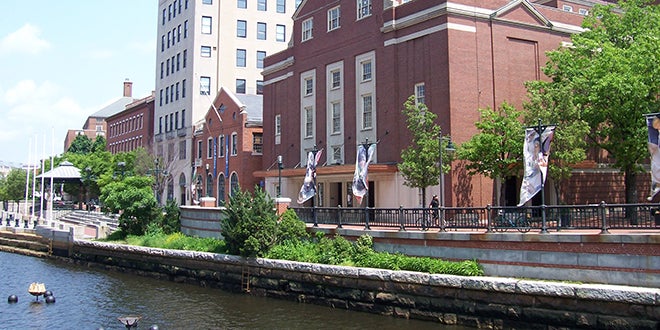
Third, universities are connecting student artists and arts activists to social justice and public policy through social innovation models. This is a smaller set of universities that offer creative placemaking certificates, arts public policy degrees, or supplemental experiential learning opportunities within the arts departments themselves. Arts, policy, and planning faculty deepen the anchor institution concept by nurturing community-university partnerships that go beyond typical “scholarship of engagement” frameworks through service learning, technical assistance, or policy guidance. The University of Chicago’s Place Lab is a grassroots effort that did not start with the university but with a sculptor and civic entrepreneur, Theaster Gates, who convinced the university to become an arts developer by connecting the institution to its community neighbors in the disinvested Southside. The partnership resulted in the rehabilitation of three abandoned properties and is now a thriving arts cluster housing the university’s Place Lab, which brings urban scholars and policy makers together with Gates’s artistic team in an effort to translate the principles working well in Chicago to other places like Akron, Detroit, and Gary, Indiana. In another example, the NH Institute of Art is launching a new online Certificate in Creative Placemaking program, to be offered starting this year in partnership with the National Consortium for Creative Placemaking, which gives graduate credit or professional development credit so that “Civic artists can learn more about the inner workings of communities and local economies. And, urban planners and public policy professionals will understand better how to engage and support the arts and artists.”
As these artist workforce programs become increasingly common, more research will be needed to examine their effectiveness in increasing sector agility, resilience, and skill development so that students are able to pursue their creative ambitions and make a living. It’s a part of a broader question about whether the prediction of John Vaughn, the Executive Director of the Association of American Universities, holds that universities will follow the example of American cities when it comes to “recognizing the arts as a key asset.” Part of this prediction relies on university leaders turning their attention to maximizing the economic and cultural impact of their artistic assets and the role they play in creating specific conditions that nurture, train, and support the regional artistic labor force.